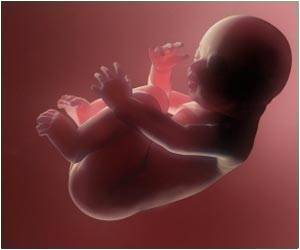A new mathematical method that combines two commonly used genotype association approaches to reveal the genetic distinction between individuals has been developed by researchers.

Currently, genome-wide association studies (GWAS) are conducted to examine genes of different individuals to determine genetic variation from individual to individual. In genetic disease studies, researchers are most interested in unrelated individuals with the same disease that share common alleles (versions of a gene). If two unrelated individuals with the same disease randomly have common alleles at a given chromosomal region, researchers can potentially link that region to the disease.
"With so many unanswered questions about the human genome, we need to continually look for new methods to more precisely define relationships," said Thomas Downey, study author and President of Partek Inc. "Identifying genetic biomarkers within the population will allow the research community to better understand the relationship between an inherited disease and its genetic cause."
A variety of tools are currently available to make sense of genetic data. However, Dr. Pevsner and his colleagues developed a new mathematical method, in collaboration with Partek Inc., to estimate the relatedness between populations by combining information about how genetic material is shared between any two people, and how it is transmitted from parents to their children. In contrast to the existing methods, using the new calculation, Dr. Pevsner''s team was able to decipher the following without reliance on any prior data:
- Previously unknown familial relationships and population relatedness in broad genomic data
- The nature of relatedness between particular individuals
- Fewer false positives (defined as individuals who are unrelated, but who are called as related)
Using this information, researchers can narrow down the possible candidates for a given inherited disease by identifying multiple common single nucleotide polymorphisms (SNPs), or genetic variations in a single DNA sequence, within a haplotype (combination of alleles). Haplotype SNPs often serve as significant clinical biomarkers in drug discovery and development.
Advertisement
Notably, when testing their method on the Human Variation Panel, Dr. Pevsner and his colleagues found previously unidentified identical, parent-child, and full-sibling relationships. Studies that calculate the associations between alleles, like the ones above, rely on unbiased representative sampling of population subsets to ensure validity. Consequently, samples are biased when unreported familial relationships are present in the dataset, causing a more frequent occurrence of common SNPs and likely misinterpretation of data and potentially unreliable findings.
Advertisement
Dr. Pevsner and his colleagues will continue to apply this method to other population subsets in hopes of further decoding the links between our genes and disease.
Support for this study was provided by a National Institutes of Health grant jointly awarded to Kennedy Krieger Institute and Partek Inc.
Joining Dr. Jonathan Pevsner and Thomas Downey as study authors were Eric Stevens, Elisha Roberson, and Joseph Baugher, all graduate students working in Dr. Pevsner''s research laboratory at Kennedy Krieger Institute in Baltimore, and Greg Heckenberg of Partek Inc. in St. Louis.
About the Kennedy Krieger Institute
Internationally recognized for improving the lives of children and adolescents with disorders and injuries of the brain and spinal cord, the Kennedy Krieger Institute in Baltimore, MD serves more than 16,000 individuals each year through inpatient and outpatient clinics, home and community services and school-based programs. Kennedy Krieger provides a wide range of services for children with developmental concerns mild to severe, and is home to a team of investigators who are contributing to the understanding of how disorders develop while pioneering new interventions and earlier diagnosis. For more information on Kennedy Krieger Institute.
Source-Newswise










